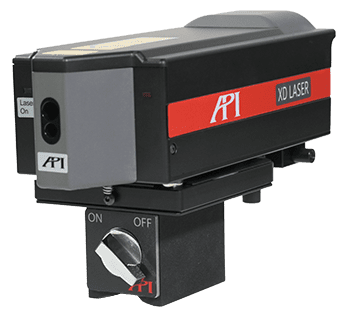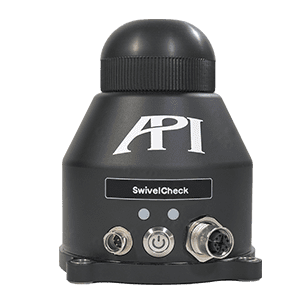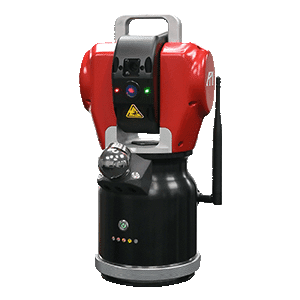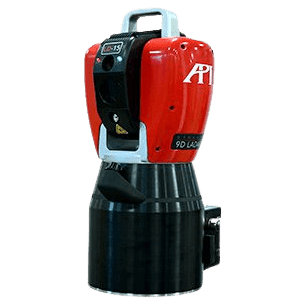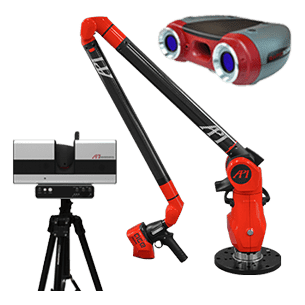7 Metrology Tools Throughout History
Metrology became an organized, scientific discipline in the 18th Century, revolving around clearly defined, standardized structures of units and ways to measure in the search of the most accurate measurements possible. But humans didn’t suddenly begin measuring in the 18th Century; measurements had already been taking place for many thousands of years around the world. Each region and civilization were developing their own metrology tools and standards for consistent measurement for building, telling time, city planning, weighing, etc.
Often these standards and metrology tools could very greatly between communities or even generations, but sometimes similar ideas were put into place in different areas of the globe long before they could have been communicated to each other. Each of these tools, no matter how rudimentary or counterintuitive to today’s standards, show the foundational concepts that later became the cornerstones of Metrology (Standardized Units, Ability to Measure, and Reference Standards). Below are 7 of the earliest and most important Tools of Metrology:
1) Cubit/Royal Cubit

Probably the first established Metrology Tool in human history is the Cubit or Royal Cubit from Ancient Egypt. A cubit was established as the measured distance from the crook of the elbow to the tip of the middle finger. As this varied for each person, eventually the Royal Cubit was introduced. The Royal Cubit was the same measurement as the standard Cubit, using the dimensions of the current King as the benchmark. Though this would change with each successive regime, the Royal Cubit standardized measurements of length a generation at a time in 3,000 BC and allowed the Egyptians to build the pyramids.
2) Stones/Grain (Carat)

Weight is much less straightforward to measure than distance, as density can lead to objects of similar size weighing dramatically different amounts. Before the standardized units of pounds or grams and electronic scales to measure them, we had to weigh things based on how many of a comparative object it took to balance the scales. Though the Stone is the more famous example of these comparative objects, they are not the arbitrary measure they seem to be at first glance. Stones were standardized by their equivalent total in grains of wheat, which have a nearly uniform size and weight. Stones can still be found as a unit of measurement in some areas of the world, and the Carat, which is still in use for Jewelry measurement today, was born out of this same method using Carob seeds. A Carat is now equivalent to 200 milligrams, or the weight of one Carob seed.
3) Odometer
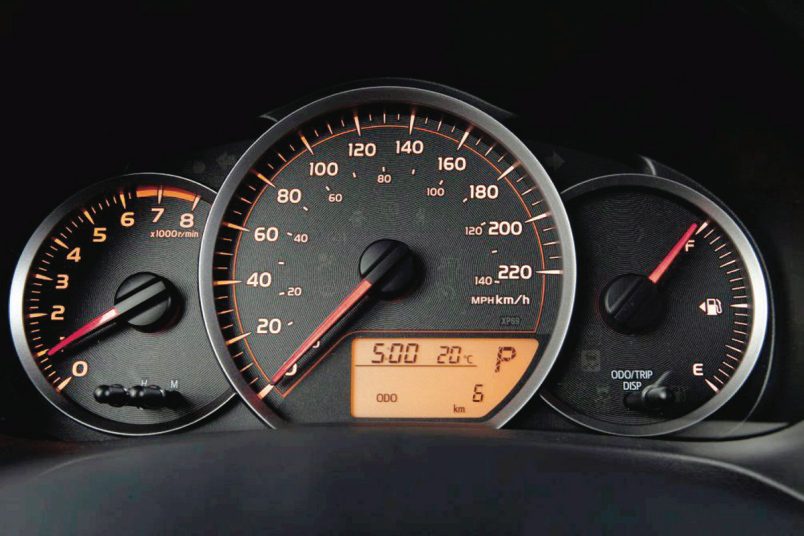
Long before they were available in every car on the planet, Odometers could be found in several different spots around the world from several eras (including Greece, Rome, and China). The basic idea was to take the known circumference of a wheel, attach it to a vehicle, and have the wheel drop or create a mark after a set number of rotations to mark a mile. While the definitions for how many rotations made one mile differed from region to region, this was the beginning of our understanding of distance as it relates to travel and would later enable us to begin measuring speed.
4) Water Clock
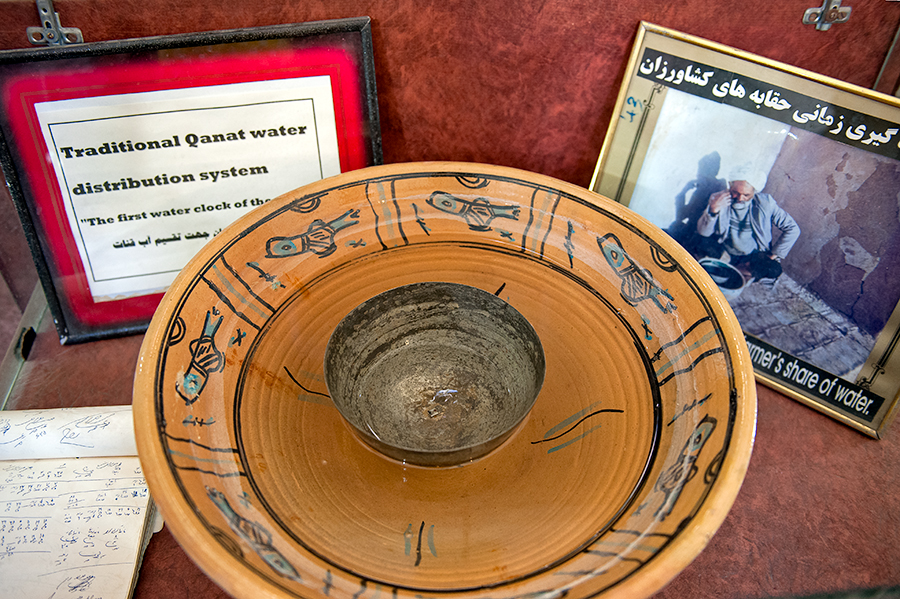
Our earliest understandings of time were based on the sun and its perceived movement across the sky. But to break that day/night cycle into measurable units or be able to tell time at night or indoors, different instruments were created to establish a length of time and see how much of it had passed. The most famous of these is the Hourglass, but the Water Clock was actually an earlier tool than that in Egypt, Rome, Greece, China, and Europe. Water Clocks measured elapsed time using a set amount of water dripping through a funnel to constitute a unit of time passed. This method was less reliable than sand as water is more susceptible to its environment (i.e. evaporation), which is why Hourglasses became the standard tool over time.
5) Sextant
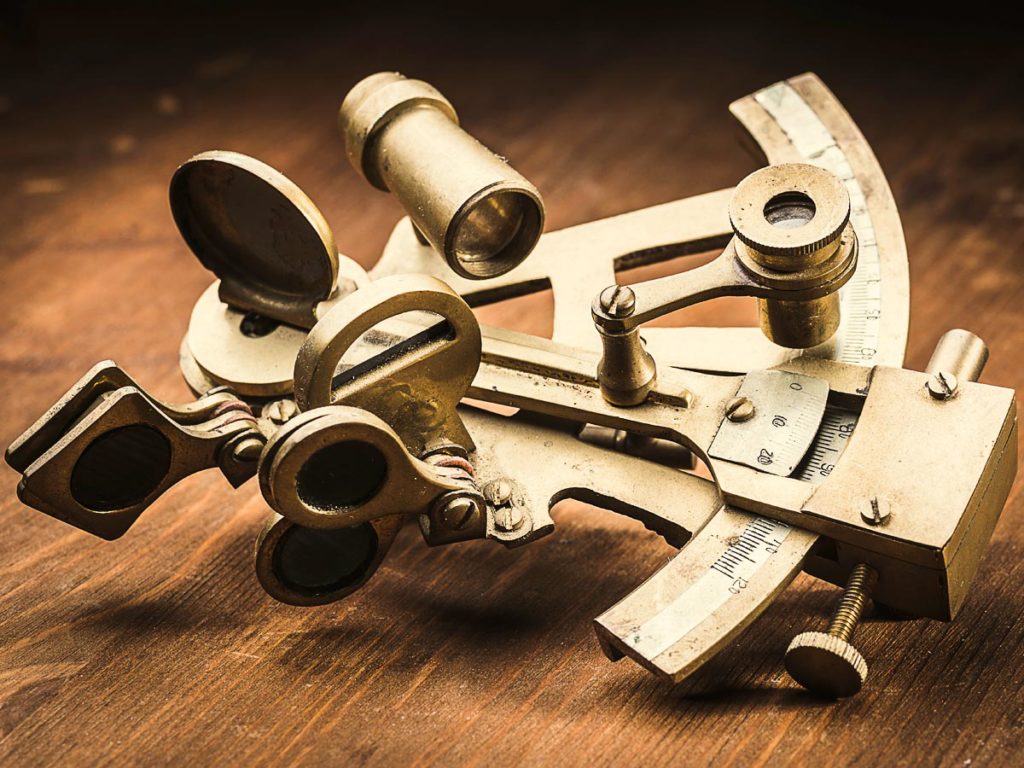
Navigation on land can be done at a basic level using nothing but landmarks for reference. When civilizations began to travel by sea, however, they needed to develop navigational tools for when there was nothing on all sides but open water. The simplest solution was to look up. The Sextant was created to allow two objects within a 60o angle of each other, in other words, the horizon with a celestial point. Sextants measure the angle between the horizon and astronomical objects like the Sun, Moon, or other planets or stars. Sextants paved the way for our modern understanding of latitude and longitude.
6) Chronometer

Chronometers were born out of necessity when people ran into difficulty telling time while travelling by sea. Astrolabes were useful for telling time and finding latitude on land, but at sea they struggled with finding longitude (due to the Earth’s rotation). Therefore, in 1714, Britain’s “Board of Longitude” established a £20,000 competition, soliciting new, more accurate designs for seafaring time measurement. The “sea clocks” that emerged in response to this challenge modified pendulum clocks to the environmental challenges of seafaring (movement, rapidly changing temperatures, and salty air), solving the problem of capturing longitude at sea for accurate time measurement and navigation. These devices were also the precursors to modern wristwatches.
7) Groma/Dioptra
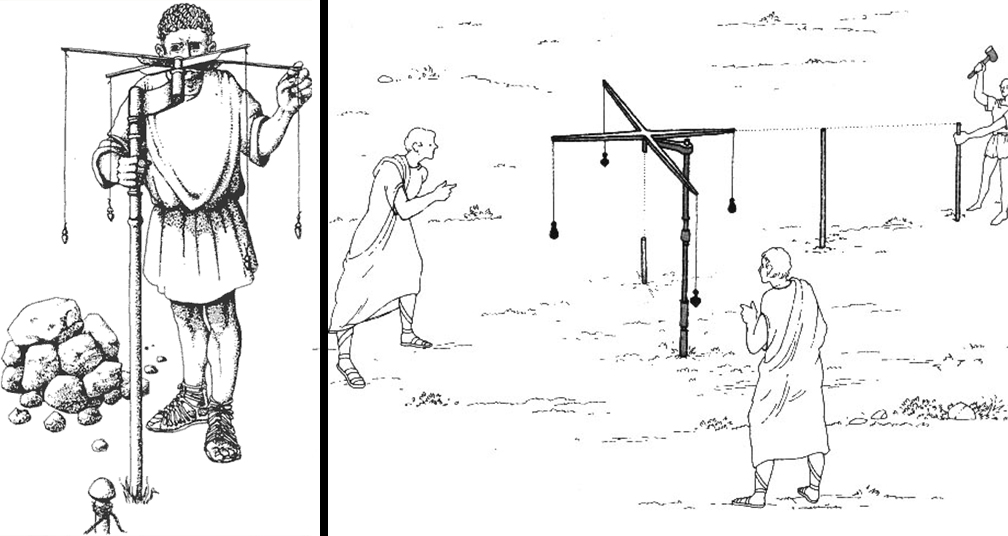
As we moved from farming to large city centers, we developed the need to be able to survey land and plan cities, aligning the structures to each other and the ground. The Groma and Dioptra are tools created by the Romans and Etruscans for early alignment, surveying, and city planning. They used counterweights hung across a central pole struck into the ground to measure perpendicularity of structures to the ground and also to ensure linear straightness for developing aqueducts, roads, land plots, and cities. These instruments, which laid the literal groundwork for modern cities and quality inspection, were succeeded by theodolite, which eventually led to the laser interferometer.
These tools are just some of the forerunners to the dimensional Metrology products we see today in factories and on construction sites the world over. Without them, not only would our ancestors’ lives have looked very different, but the very concepts of our modern civilizations might never have developed. In a very real way, the Cubit was our first halting step towards the modern-day Laser Tracker.
More Metrology Tools
Keep learning about the history of metrology. read our next blog post in the history of metrology tools; History of metrology. 5 more ancient measurement tools
Metrology Tools –Sources:
qualitylogoproducts.com/blog/a-brief-history-of-measuring-systems-and-tools
mtiinstruments.com/knowledge-center/history-of-measurements/
jalopnik.com/no-benjamin-franklin-did-not-invent-the-odometer-1823961582
legioneromana.altervista.org/content/how-use-roman-groma?language=en





